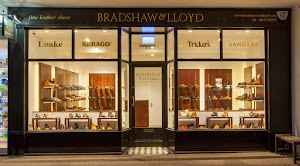The Strike:
In February 1859, the manufacturers of Northampton issued a statement confirming the shoemakers worst fears: machines to close shoe uppers were to be introduced:
The reaction of the Mutual Protection Society was to call a strike, urging as many shoemakers as possible to leave Northampton and seek work elsewhere. However the strike was unsuccessful and failed to rouse the town’s shoemakers. It transpired that the Northampton shoemakers did not have any objection to the introduction of machines so long as they did not threaten their jobs. By the middle of May 1858, it was all over and sewing machinery had a permanent role to play in the production of Northampton’s shoes. By 1864, there were 1500 closing machines in the town.
Just as business was returning as normal for Northampton’s shoemakers, further changes were in store. In Northampton’s Campbell Square, the construction of Isaac, Campbell and Co’s factory was completed in 1859. The company intended all of the shoemakers it employed to work inside the factory instead of at home – as was the norm. In order to convince the stubborn shoemakers, the company published an appeal.
This appeal included appeasements designed to entice the shoemakers, as well as the very strictures which they wanted to avoid at all costs. Women were to have separate workshops with female superintendents while married women could continue working from home. Children could be apprenticed and the shoemakers could appoint their own overseers. The company wanted these appeasements to prove that:
“the system we propose is not ‘the factory system’. It is a carefully considered system of constant, orderly, regulated work, without an of the bad features which have made the factory system distasteful to you;”
However, the fixed wages and hours represented an end to the workers’ autonomy. The Isaac Campbell and Co’s factory failed, but others were to replace it, such as Loake Shoes and Sanders Shoes. Trickers Shoes had of course been in business by this time for generations. In 1861 the Turner Brothers took over, four years later they were producing 100,000 pairs of shoes a week using steam engines: the factory had arrived.


